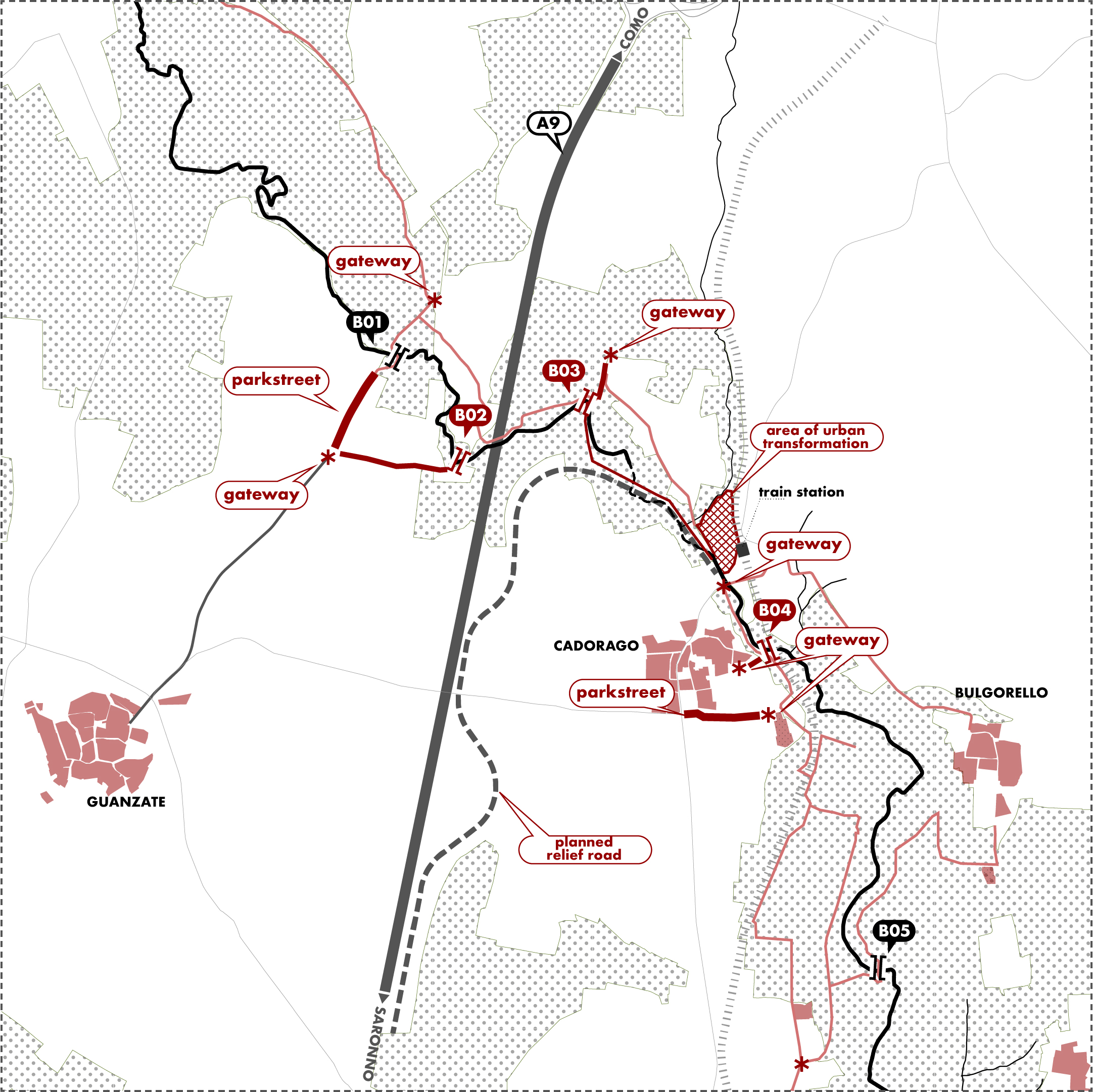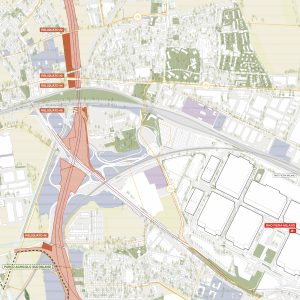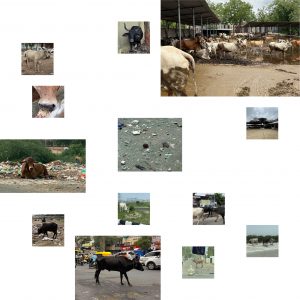The research, developed within a doctoral thesis (PNRR 351) in partnership with Consorzio Parco del Lura, investigates the spaces activated by crossings as “collateral” places capable of triggering new relationships between the urban fabric, the fluvial landscape, and soft infrastructure.
In the peri-urban context of Northen Lombardy – characterized by small- and medium-scale settlements and north-south infrastructural and hydrographic corridors, the Lura Park takes form as an interstitial figure, composed mainly of agricultural and woodland areas.
Within this framework, the pedestrian and cycling bridge emerges as a nodal device for reinterpreting the park’s landscape in relation to the stream, through a multiscalar vision – ranging from the architectural object to regional ecological and soft-mobility systems – aimed at restoring local connections.
The research draws upon an atlas of case studies, analysed through three spatial categories: bridge threshold (landing), proximate spaces, and deeper spatial relationships. The inquiry transcends the mer objecthood of the bridge, focusing instead on those contexts that resonate with it, generating new centralities or enhancing and re-signifying existing elements.
The bridge thus emerges as a place-maker and catalyst for spatial, social, ecological, and landscape connections.
The application on the Lura Park territory has deepened the study of potentially “activable” segments, identifying significant areas and strategic elements – architectural, urban, landscape, infrastructural – in relation to both existing and planned ecological and mobility networks.
A recurring strategic pattern has finally been identified (“park gateway” – “park-street” – bridge), configuring systems of transition and anticipation of the park’s presence, and redefining the threshold between city and stream as a space of identity.
Bibliography
- Careri, F. (2006). Walkscapes: Camminare come pratica estetica. Torino: Einaudi.
- Corner, J. (1999). “The agency of mapping.” In Cosgrove, D. (Ed.), Mappings (pp. 213–252). London: Reaktion Book.
- Cassani, A. G. (2014). Figure del ponte. Simbolo e architettura. Bologna: Pendragon.



